Markov Processes for Stochastic Modeling
Copyright Page
Contents
Preface
Chapter 1. Basic Concepts
1.1 Review of Probability
1.1.1 Conditional Probability
1.1.2 Independence
1.1.3 Total Probability and the Bayes’ Theorem
1.2 Random Variables
1.2.1 Distribution Functions
1.2.2 Discrete Random Variables
1.2.3 Continuous Random Variables
1.2.4 Expectations
1.2.5 Expectation of Nonnegative Random Variables
1.2.6 Moments of Random Variables and the Variance
1.3 Transform Methods
1.3.1 The s-Transform
1.3.2 The z-Transform
1.4 Bivariate Random Variables
1.4.1 Discrete Bivariate Random Variables
1.4.2 Continuous Bivariate Random Variables
1.4.3 Covariance and Correlation Coefficient
1.5 Many Random Variables
1.6 Fubini’s Theorem
1.7 Sums of Independent Random Variables
1.8 Some Probability Distributions
1.8.1 The Bernoulli Distribution
1.8.2 The Binomial Distribution
1.8.3 The Geometric Distribution
1.8.4 The Pascal Distribution
1.8.5 The Poisson Distribution
1.8.6 The Exponential Distribution
1.8.7 The Erlang Distribution
1.8.8 Normal Distribution
1.9 Introduction to Stochastic Processes
1.10 Classification of Stochastic Processes
1.11 Characterizing a Stochastic Process
1.11.1 Mean and Autocorrelation Function of a Stochastic Process
1.12 Stationary Stochastic Processes
1.12.1 Strict-Sense Stationary Processes
1.12.2 Wide-Sense Stationary Processes
1.13 Ergodic Stochastic Processes
1.14 Some Models of Stochastic Processes
1.14.1 Martingales
1.14.2 Counting Processes
1.14.3 Independent Increment Processes
1.14.4 Stationary Increment Process
1.14.5 Poisson Processes
1.15 Problems
Chapter 2. Introduction to Markov Processes
2.1 Introduction
2.2 Structure of Markov Processes
2.3 Strong Markov Property
2.4 Applications of Discrete-Time Markov Processes
2.4.1 Branching Processes
2.4.2 Social Mobility
2.4.3 Markov Decision Processes
2.5 Applications of Continuous-Time Markov Processes
2.5.1 Queueing Systems
2.5.2 Continuous-Time Markov Decision Processes
2.5.3 Stochastic Storage Systems
2.6 Applications of Continuous-State Markov Processes
2.6.1 Application of Diffusion Processes to Financial Options
2.6.2 Applications of Brownian Motion
Chapter 3. Discrete-Time Markov Chains
3.1 Introduction
3.2 State Transition Probability Matrix
3.2.1 The n-Step State Transition Probability
3.3 State Transition Diagrams
3.4 Classification of States
3.5 Limiting-State Probabilities
3.5.1 Doubly Stochastic Matrix
3.6 Sojourn Time
3.7 Transient Analysis of Discrete-Time Markov Chains
3.8 First Passage and Recurrence Times
3.9 Occupancy Times
3.10 Absorbing Markov Chains and the Fundamental Matrix
3.10.1 Time to Absorption
3.10.2 Absorption Probabilities
3.11 Reversible Markov Chains
3.12 Problems
Chapter 4. Continuous-Time Markov Chains
4.1 Introduction
4.2 Transient Analysis
4.3 Birth and Death Processes
4.3.1 Local Balance Equations
4.3.2 Transient Analysis of Birth and Death Processes
4.4 First Passage Time
4.5 The Uniformization Method
4.6 Reversible Continuous-Time Markov Chains
4.7 Problems
Chapter 5. Markovian Queueing Systems
5.1 Introduction
5.2 Description of a Queueing System
5.3 The Kendall Notation
5.4 The Little’s Formula
5.5 The PASTA Property
5.6 The M/M/1 Queueing System
5.6.1 Stochastic Balance
5.6.2 Total Time and Waiting Time Distributions of the M/M/1 Queueing System
5.7 Examples of Other M/M Queueing Systems
5.7.1 The M/M/c Queue: The c-Server System
5.7.2 The M/M/1/K Queue: The Single-Server Finite-Capacity System
5.7.3 The M/M/c/c Queue: The c-Server Loss System
5.7.4 The M/M/1//K Queue: The Single-Server Finite-Customer Population System
5.8 M/G/1 Queue
5.8.1 Waiting Time Distribution of the M/G/1 Queue
5.8.2 The M/Ek/1 Queue
5.8.3 The M/D/1 Queue
5.8.4 The M/M/1 Queue Revisited
5.8.5 The M/HK/1 Queue
5.9 G/M/1 Queue
5.9.1 The Ek/M/1 Queue
5.9.2 The D/M/1 Queue
5.9.3 The H2/ M/1 Queue
5.10 Applications of Markovian Queues
5.11 Problems
Chapter 6. Markov Renewal Processes
6.1 Introduction
6.2 The Renewal Equation
6.2.1 Alternative Approach
6.3 The Elementary Renewal Theorem
6.4 Random Incidence and Residual Time
6.5 Markov Renewal Process
6.5.1 The Markov Renewal Function
6.6 Semi-Markov Processes
6.6.1 Discrete-Time Semi-Markov Processes
6.6.2 Continuous-Time Semi-Markov Processes
6.7 Markov Jump Processes
6.7.1 The Homogeneous Markov Jump Process
6.8 Problems
Chapter 7. Markovian Arrival Processes
7.1 Introduction
7.2 Overview of Matrix-Analytic Methods
7.3 Markovian Arrival Process
7.3.1 Properties of MAP
7.4 Batch Markovian Arrival Process
7.4.1 Properties of BMAP
7.5 Markov-Modulated Poisson Process
7.5.1 The Interrupted Poisson Process
7.5.2 The Switched Poisson Process
7.5.3 Properties of MMPP
7.5.4 The MMPP(2)/M/1 Queue
7.6 Markov-Modulated Bernoulli Process
7.6.1 The MMBP(2)
7.7 Sample Applications of MAP and Its Derivatives
7.8 Problems
Chapter 8. Random Walk
8.1 Introduction
8.2 The Two-Dimensional Random Walk
8.3 Random Walk as a Markov Chain
8.4 Symmetric Random Walk as a Martingale
8.5 Random Walk with Barriers
8.6 Gambler’s Ruin
8.6.1 Ruin Probability
8.6.2 Duration of a Game
8.7 First Return Times
8.8 First Passage Times
8.9 Maximum of a Random Walk
8.10 Random Walk on a Graph
8.10.1 Random Walk on a Weighted Graph
8.11 Markov Random Walk
8.11.1 Markov Random Walk in Semisupervised Machine Learning
8.12 Random Walk with Correlation
8.13 Continuous-Time Random Walk
8.13.1 The Master Equation
8.14 Sample Applications of Random Walk
8.14.1 The Ballot Problem
8.14.2 Web Search
8.14.3 Mobility Models in Mobile Networks
8.14.4 Insurance Risk
8.14.5 Content of a Dam
8.14.6 Cash Management
8.15 Problems
Chapter 9. Brownian Motion and Diffusion Processes
9.1 Introduction
9.2 Brownian Motion
9.2.1 Brownian Motion with Drift
9.2.2 Brownian Motion as a Markov Process
9.2.3 Brownian Motion as a Martingale
9.2.4 First Passage Time of a Brownian Motion
9.2.5 Maximum of a Brownian Motion
9.2.6 First Passage Time in an Interval
9.2.7 The Brownian Bridge
9.3 Introduction to Stochastic Calculus
9.3.1 The Ito Integral
9.3.2 The Stochastic Differential
9.3.3 The Ito’s Formula
9.3.4 Stochastic Differential Equations
9.4 Geometric Brownian Motion
9.5 Fractional Brownian Motion
9.6 Application of Brownian Motion to Option Pricing
9.7 Random Walk Approximation of Brownian Motion
9.8 The Ornstein-Uhlenbeck Process
9.8.1 Mean Reverting Ornstein-Uhlenbeck Process
9.8.2 Applications of the Ornstein-Uhlenbeck Process
9.9 Diffusion Processes
9.10 Examples of Diffusion Processes
9.10.1 Brownian Motion
9.10.2 Brownian Motion with Drift
9.10.3 Levy Processes
9.11 Relationship Between the Diffusion Process and Random Walk
9.12 Problems
Chapter 10. Controlled Markov Processes
10.1 Introduction
10.2 Markov Decision Processes
10.2.1 Overview of Dynamic Programming
10.2.2 Markov Reward Processes
10.2.3 MDP Basics
10.2.4 MDPs with Discounting
10.2.5 Solution Methods
10.3 Semi-Markov Decision Processes
10.3.1 Semi-Markov Reward Model
10.3.2 Discounted Reward
10.3.3 Analysis of the Continuous-Decision-Interval SMDPs
10.3.4 Solution by Policy-Iteration
10.3.5 SMDP with Discounting
10.3.6 Solution by Policy Iteration when Discounting Is Used
10.3.7 Analysis of the Discrete-Decision-Interval SMDPs with Discounting
10.3.8 Continuous-Time Markov Decision Processes
10.3.9 Applications of Semi-Markov Decision Processes
10.4 Partially Observable Markov Decision Processes
10.4.1 Partially Observable Markov Processes
10.4.2 POMDP Basics
10.4.3 Solving POMDPs
10.4.4 Computing the Optimal Policy
10.4.5 Approximate Solutions of POMDP
10.5 Problems
Chapter 11. Hidden Markov Models
11.1 Introduction
11.2 HMM Basics
11.3 HMM Assumptions
11.4 Three Fundamental Problems
11.5 Solution Methods
11.5.1 The Evaluation Problem
11.5.2 The Decoding Problem and the Viterbi Algorithm
11.5.3 The Learning Problem and the Baum-Welch Algorithm
11.6 Types of Hidden Markov Models
11.7 Hidden Markov Models with Silent States
11.8 Extensions of Hidden Markov Models
11.8.1 Hierarchical Hidden Markov Model
11.8.2 Factorial Hidden Markov Model
11.8.3 Coupled Hidden Markov Model
11.8.4 Hidden Semi-Markov Models
11.8.5 Profile HMMs for Biological Sequence Analysis
11.9 Other Extensions of HMM
11.10 Problems
Chapter 12. Markov Random Fields
12.1 Introduction
12.2 Markov Random Fields
12.2.1 Graphical Representation
12.2.2 Gibbs Random Fields and the Hammersley-Clifford Theorem
12.3 Examples of Markov Random Fields
12.3.1 The Ising Model
12.3.2 The Potts Model
12.3.3 Gauss-Markov Random Fields
12.4 Hidden Markov Random Fields
12.5 Applications of Markov Random Fields
12.6 Problems
Chapter 13. Markov Point Processes
13.1 Introduction
13.2 Temporal Point Processes
13.2.1 Specific Temporal Point Processes
13.3 Spatial Point Processes
13.3.1 Specific Spatial Point Processes
13.4 Spatial-Temporal Point Processes
13.5 Operations on Point Processes
13.5.1 Thinning
13.5.2 Superposition
13.5.3 Clustering
13.6 Marked Point Processes
13.7 Markov Point Processes
13.8 Markov Marked Point Processes
13.9 Applications of Markov Point Processes
13.10 Problems
Chapter 14. Markov Chain Monte Carlo
14.1 Introduction
14.2 Monte Carlo Simulation Basics
14.2.1 Generating Random Variables from the Random Numbers
14.2.2 Monte Carlo Integration
14.3 Markov Chains Revisited
14.4 MCMC Simulation
14.4.1 The Metropolis-Hastings Algorithm
14.4.2 Gibbs Sampling
14.5 Applications of MCMC
14.5.1 Simulated Annealing
14.5.2 Inference in Belief Networks
14.6 Choice of Method
14.7 Problems
References
Index
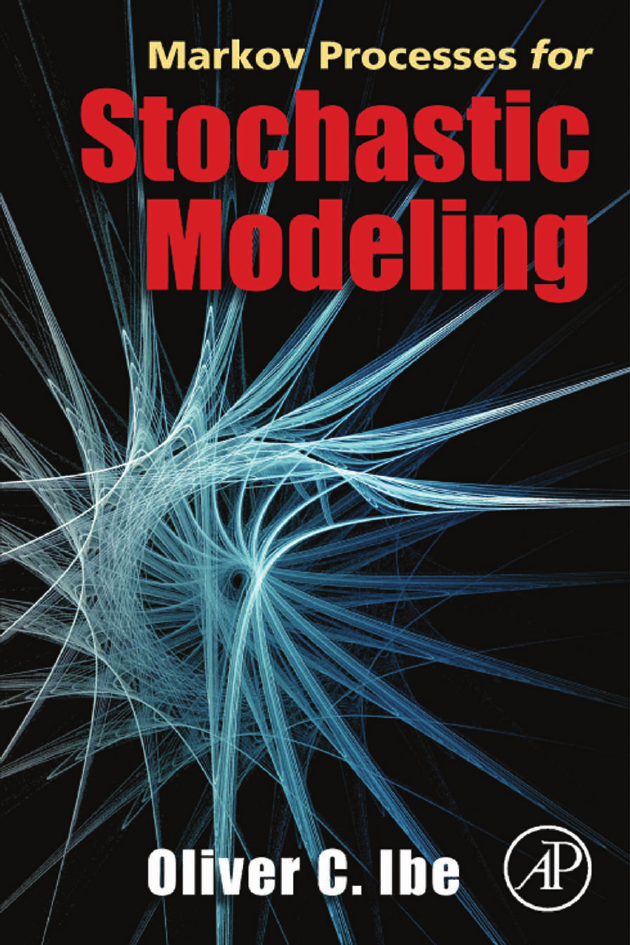

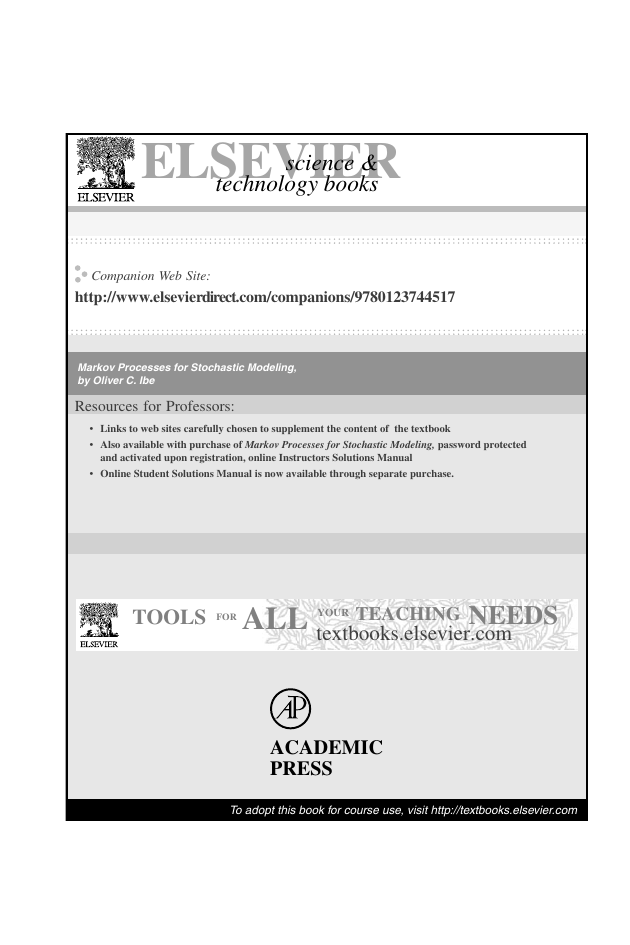
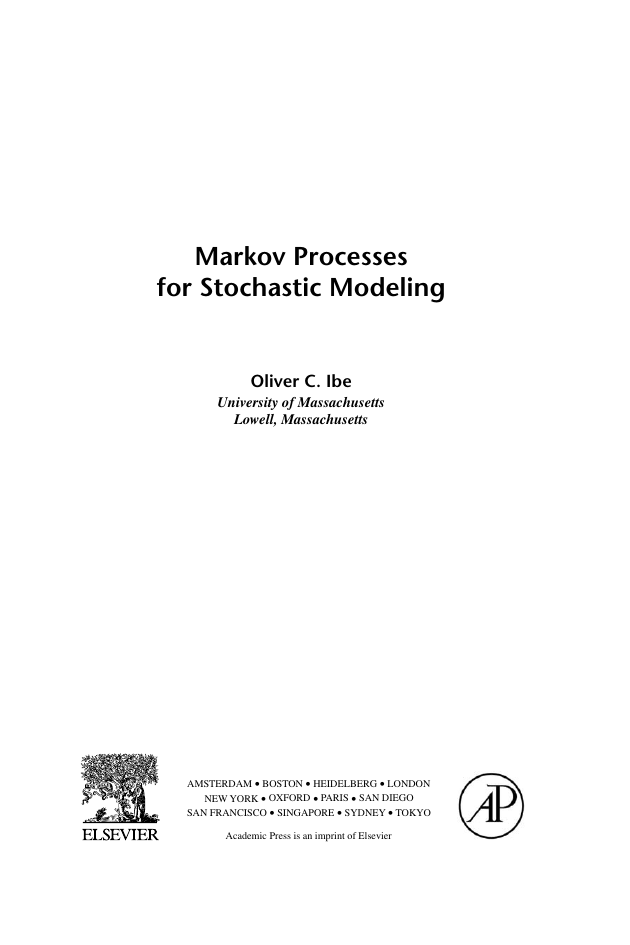
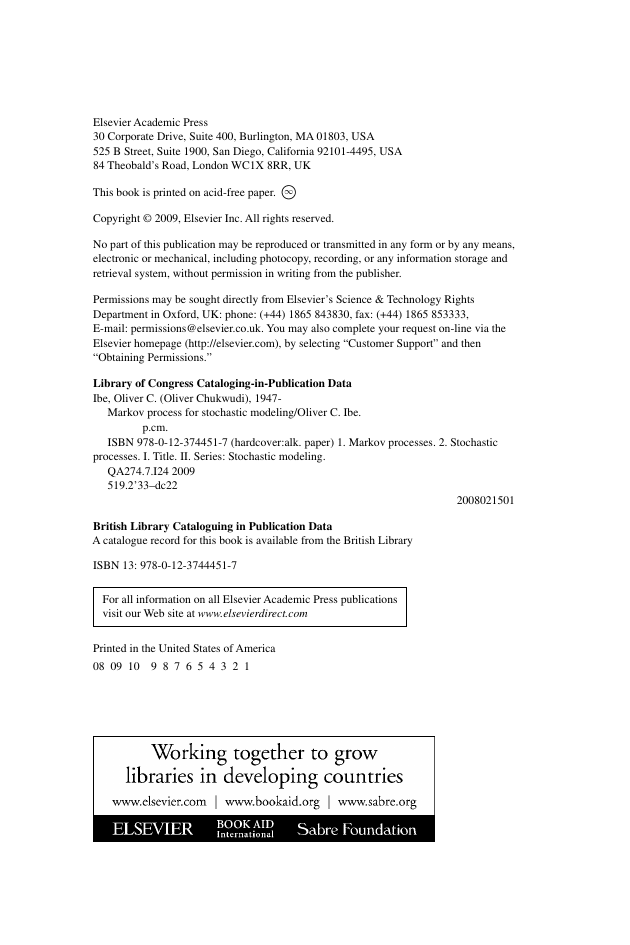

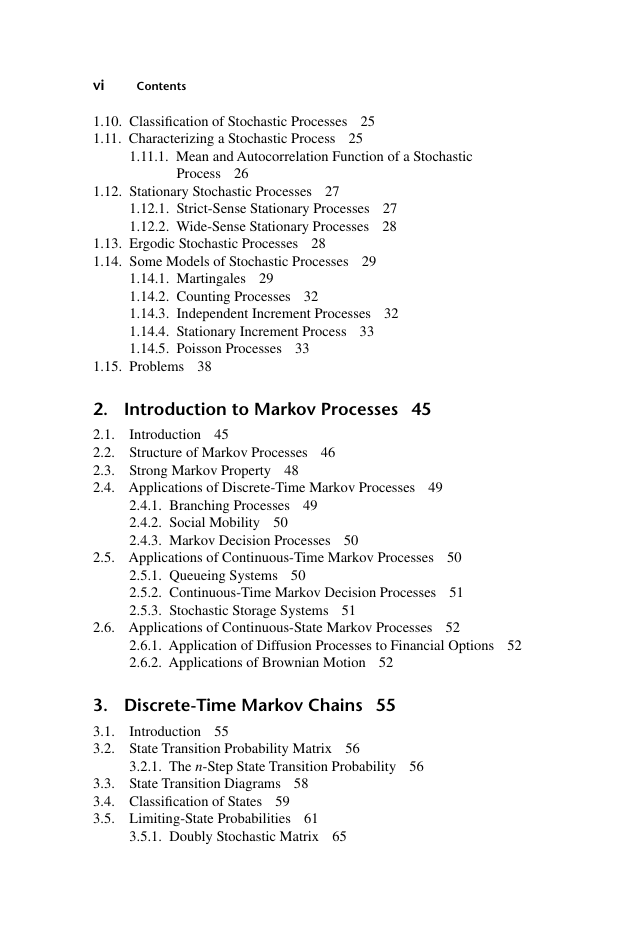
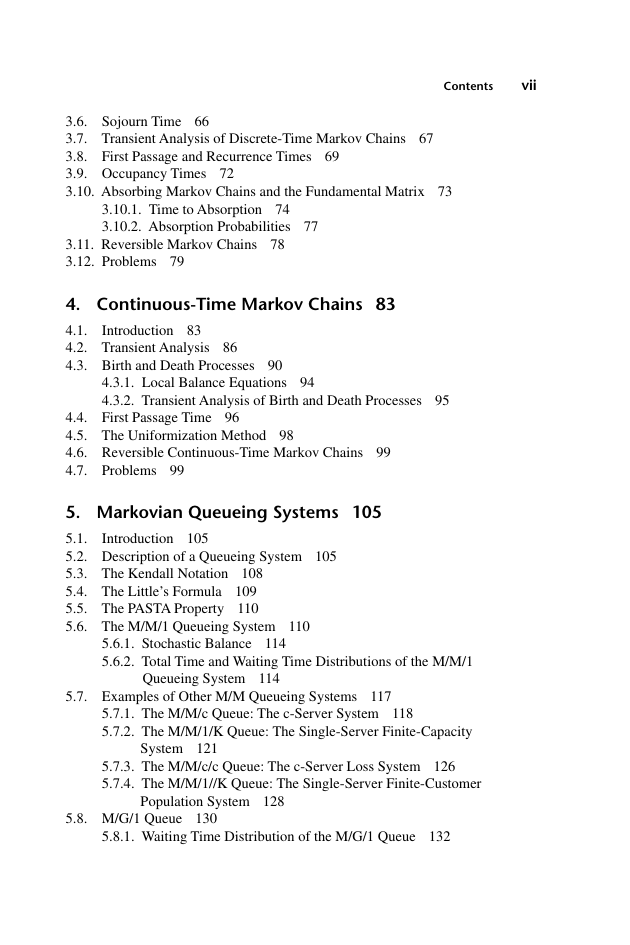








 2023年江西萍乡中考道德与法治真题及答案.doc
2023年江西萍乡中考道德与法治真题及答案.doc 2012年重庆南川中考生物真题及答案.doc
2012年重庆南川中考生物真题及答案.doc 2013年江西师范大学地理学综合及文艺理论基础考研真题.doc
2013年江西师范大学地理学综合及文艺理论基础考研真题.doc 2020年四川甘孜小升初语文真题及答案I卷.doc
2020年四川甘孜小升初语文真题及答案I卷.doc 2020年注册岩土工程师专业基础考试真题及答案.doc
2020年注册岩土工程师专业基础考试真题及答案.doc 2023-2024学年福建省厦门市九年级上学期数学月考试题及答案.doc
2023-2024学年福建省厦门市九年级上学期数学月考试题及答案.doc 2021-2022学年辽宁省沈阳市大东区九年级上学期语文期末试题及答案.doc
2021-2022学年辽宁省沈阳市大东区九年级上学期语文期末试题及答案.doc 2022-2023学年北京东城区初三第一学期物理期末试卷及答案.doc
2022-2023学年北京东城区初三第一学期物理期末试卷及答案.doc 2018上半年江西教师资格初中地理学科知识与教学能力真题及答案.doc
2018上半年江西教师资格初中地理学科知识与教学能力真题及答案.doc 2012年河北国家公务员申论考试真题及答案-省级.doc
2012年河北国家公务员申论考试真题及答案-省级.doc 2020-2021学年江苏省扬州市江都区邵樊片九年级上学期数学第一次质量检测试题及答案.doc
2020-2021学年江苏省扬州市江都区邵樊片九年级上学期数学第一次质量检测试题及答案.doc 2022下半年黑龙江教师资格证中学综合素质真题及答案.doc
2022下半年黑龙江教师资格证中学综合素质真题及答案.doc